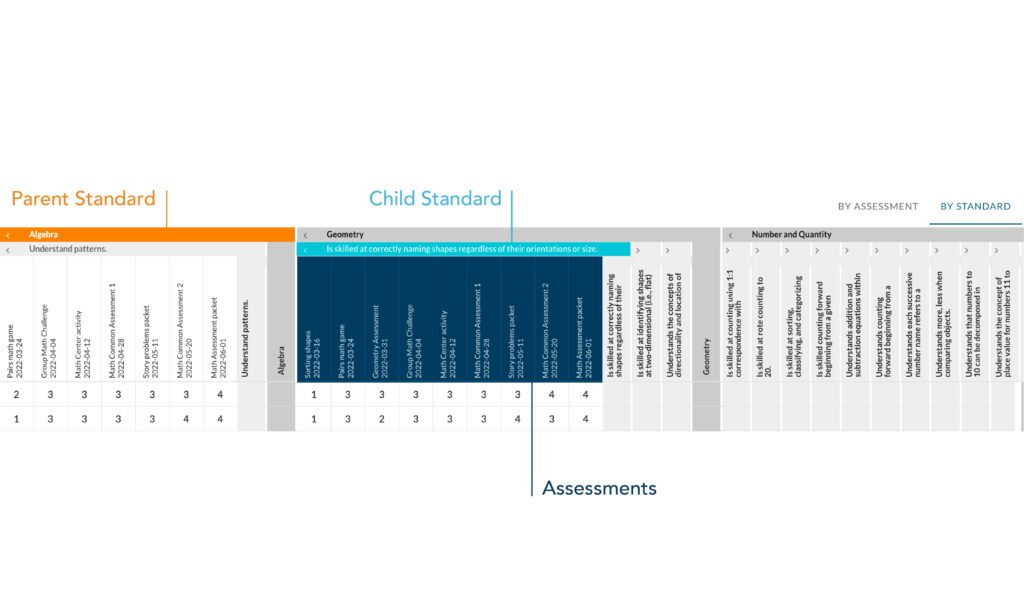Mapping Assessments
An assessment map is a tool to help with big-picture planning. In this blog post on assessment mapping, I make the case that while a curriculum map is about big-picture inputs like students’ abilities and barriers, time constraints, and available materials, the assessment map is about the large-scale outputs – what should be learned by a certain point in time.
The assessment map helps us consider the collection of outputs, check that we are not accidentally omitting things, and examine our decisions for how frequently to assess each of our stated outcomes (targets, indicators, etc..)
Ultimately, a carefully designed assessment map helps the teacher ensure they adequately assess all of the targets they intend to assess and also helps them see redundancies.
How does the JumpRope software support you in this process?
The view below would help a teacher check how well they execute relative to their assessment map. It would illuminate which targets are being amply assessed and, by default, those not getting adequate assessment attention. Having this sort of information could help a teacher redouble efforts to better assess (and likely teach) certain targets or to reconsider their appropriateness within the curriculum.
Essentially, this view in JumpRope enables teachers to maintain fidelity to their assessment maps and/or make changes based on what they see in the data as the year unfolds. As seen below, JumpRope allows the teacher to see how many times they have assessed each indicator (child standard) and to add more assessments if need be.

In Summary
When we know how many times we’ve assessed an indicator, we can feel confident that we have ample data or that we need more data to draw conclusions about student learning. The above view demonstrates how a teacher’s informed use of JumpRope readily supports this practice.
If you’d like to learn more about how JumpRope can help you in the assessment mapping process, reach out today for a discussion.

